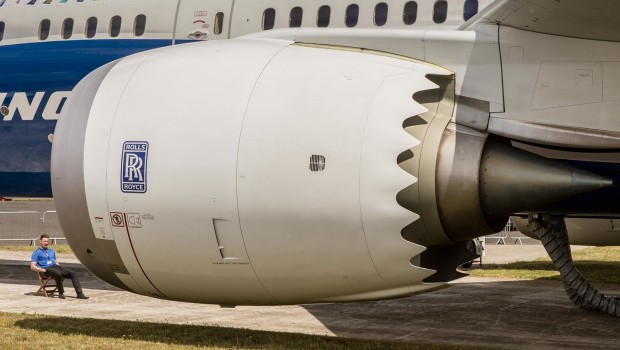
Rolls-Royce is to advise Boeing 787 customers of an accelerated inspection regime for Trent 1000 TEN engines, after the discovery of premature blade deterioration on some powerplants.
The Trent 1000 TEN is the latest version of the powerplant - with around 180 in service - and had not been affected by durability concerns on earlier variants of the engine.
But Singapore Airlines recently withdrew some of its TEN-powered Boeing 787-10s from service for checks on high-pressure turbine blades.
Rolls-Royce says it is responding to the "earlier than anticipated" deterioration of high-pressure turbine blades in a "small population" of the TEN engine, and has agreed an inspection regime with airworthiness authorities.
It has already advised airlines that the blades would have a limited life cycle, and the company is testing an enhanced version of the blade which will be introduced to the fleet in early 2020.
The European Union Aviation Safety Agency is to detail the agreed inspection programme, based on a service bulletin, in an airworthiness directive.
"This new accelerated inspection regime is designed to allow us to confirm the health of the Trent 1000 TEN fleet over the next few months," says Rolls-Royce.
The manufacturer states that it has examined a number of TEN engines which have logged a higher frequency of flights at the "upper end" of the powerplant's operating range.
"A small number of these engines have needed to have their [high-pressure turbine] blades replaced earlier than scheduled," the company acknowledges.
It adds that the inspections will "improve our understanding" of the deterioration phenomenon, pointing out that it is a "known issue" but is "occurring faster than we expected in some engines".
"We sincerely regret the disruption this accelerated inspection regime will cause and we are doing everything we can to support our customers," says Rolls-Royce civil aerospace president Chris Cholerton.
The company's financial guidance on the in-service cash costs of the Trent 1000 for 2019 and 2020 is unchanged.
Rolls-Royce stresses that the inspections for the TEN are not related to the durability issues which have affected its earlier Package B and C versions of the Trent 1000, which the company is already working to address.
Monitoring of the Package B and C engines has turned up a number of durability issues, including sulphidation on intermediate-pressure turbine blades caused by air pollutants.
This led Rolls-Royce to develop a new blade design with an improved protective coating.
But the company also found durability issues with high-pressure turbine blades, and a new design emerged in October last year to rectify the problem.
Improvements were also necessary for intermediate-pressure compressor rotor blades which were vulnerable to possible cracking under certain vibration conditions. Rolls-Royce says a redesigned compressor blade is starting to be installed following approval.
Rolls-Royce says it expects the number of aircraft affected by the Package B and C inspection and maintenance programmes to reduce gradually over the course of this year.

Ingen kommentarer:
Legg inn en kommentar
Merk: Bare medlemmer av denne bloggen kan legge inn en kommentar.